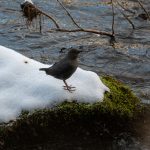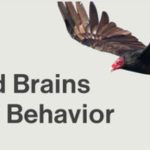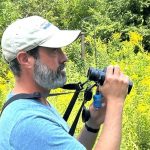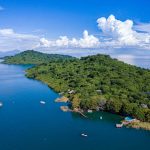I’ve spent the odd hour sea-watching from both land and sea. I’ve sea-watched with some very experienced birders whose ability to identify species almost at the edge of visibility has left me questioning my optics, my eyesight, my ability and quite often my sanity. I’ve listened and learned and gone back to listen and learn some more. I’ve made mistakes and resolved to work harder, to read more, to look better to see and watch when sea- watching. I’ve learned to tune out the banter and fed on the occasional called out field mark or insightful comment on subtle jizz from those that are infinitely more time-served than I. From this niche of my birding I have taken great enjoyment and whilst I can’t claim to be an expert I look forward to hours spent straining at the horizon.
watching. I’ve learned to tune out the banter and fed on the occasional called out field mark or insightful comment on subtle jizz from those that are infinitely more time-served than I. From this niche of my birding I have taken great enjoyment and whilst I can’t claim to be an expert I look forward to hours spent straining at the horizon.
Photographic guides are opinion splitters, some birders love images others are completely turned off by them, yearning for the art and craft of the traditional field guide. There are good photographic guides and a great many bad ones. Being entirely honest ahead of receiving a copy of Petrels, Albatrosses and Storm Petrels of North America: A Photographic Guide I was highly sceptical that a ‘photographic guide’ could do justice to the ‘tubenoses’ and I questioned whether as a European birder I would find much value in the guide and was I as a result going to have to find a carefully worded way of retaining my integrity and honesty and advising 10,000 Birds readers to hang onto their dollars/pounds/yen (delete as appropriate). Thankfully it became apparent very quickly that on the contrary this guide just oozes ‘value’ if you’re interested in seabird identification.
The first 50 pages of this near 500-page volume should be made compulsory reading for anyone planning to go look for sea-birds, long before they ever raise a pair of bins at a distant passing shearwater. Crammed with detail, from it’s introductory ‘What are Tubenoses?’ section through chapters on Ocean Habitats and Tubenose taxonomy Howell guides us to his superb section on Field Identification of Tubenoses ahead of the main species accounts. This section offers some valuable insights on flight manner and how environmental factors can impact on both the bird and the observer’s perception of it. The diagrammatic representations of flight manner are simple and prove the maxim that a picture, or in this instance a simple diagram, is worth a thousands words. Their simplicity belies their usefulness as an aid to describing flight style in the field.
The quality of images used in the species accounts is generally very good. The sheer volume of images presented highlighting different plumage characteristics, environmental conditions, moults and populations on a single species is both useful and illuminating. Anyone that has a single mental image of Northern Fulmar should go no further than the 27 images for that species alone.
One of the toughest challenges in the field with many groups of species is being able to confidently tell apart similar species. Howell obviously recognises this is no different (and in some cases extremely difficult) in tubenoses, so dedicated sections in every species account discussing similar species and some of the key identification features and the pitfalls go a long way to adding to the usefulness of this guide.
After making his case for the importance of understanding factors such as habitat and flight style it’s no surprise than that each species account also has a specific section covering those topics that builds on the earlier introduction offering insight into individual flight styles in different wind conditions.
This is a great work and obviously a labour of love from an author who clearly understands and cares about his subject and knows just how difficult the identification of these species can be but also acknowledges the limitations of current knowledge when he writes sentences such as ‘there are many more waves to crest’. Criticism of such a work might seem churlish but to my mind there are two areas that could be improved. First, whilst I appreciate this is a ‘photographic guide’ the inclusion of a limited range of field sketches from Ian Lewington simply whet my appetite and offered an insight into what was possible if more had been commissioned. In my view this would have widened the appeal further and made for a more ‘commercial’ offer. Secondly, I was surprised that the opportunity to annotate some of the specific species images wasn’t taken in similar vein to the intro section. This may have been deliberate but for those unfamiliar with tubenose topography the lack of annotation might just result in a little back and forth page flicking.
In summary, an outstanding piece of work, worthy of a place on any sea-watcher’s bookshelf and offering exceptional value for money in these austere times at a cover price of just $30 when compared to the price of some other recent releases.
For another perspective on this book you can read Donna’s review as well.













Leave a Comment